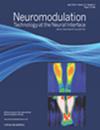Long-term Outcomes of Sacral Nerve Stimulation on the Treatment of Fecal Incontinence: A Systematic Review
IF 3.2
3区 医学
Q2 CLINICAL NEUROLOGY
引用次数: 0
Abstract
Introduction
Sacral nerve stimulation (SNS) has now been used as a treatment for fecal incontinence (FI) for >20 years. The aim of this systematic review was to determine the long-term efficacy of SNS on the treatment of FI.
Materials and Methods
A comprehensive search of the MEDLINE, Embase, and Cochrane Central data bases was performed to find publications, excluding case reports, reporting outcomes of SNS treatment for FI in adults with ≥36 months of follow-up. Bias was assessed using the Risk of Bias in Non-randomized Studies–of Interventions tool. Data were summarized per reported FI-related outcomes for symptom severity and quality of life.
Results
In total, 3326 publications were identified, and 36 studies containing 3770 subjects were included. All studies had a serious risk of bias. Success was variably defined by each publication and ranged from 59.4% to 87.5% for per-protocol analyses and 20.9% to 87.5% for intention-to-treat analyses. All studies reporting bowel diary data, St Mark’s scores, and Cleveland Clinic Incontinence Scores indicated significant improvement with SNS treatment in the long term. Studies that evaluated quality-of-life outcomes also all showed improvements in quality of life as measured by the Fecal Incontinence Quality of Life Scale. The aggregate revision rate was 35.2%, and the explantation rate was 19.7%.
Conclusions
Improvements in objective and subjective outcomes at ≥36 months support using SNS for the long-term treatment of FI. Interpretation of these data is limited by a lack of comparative trials and heterogeneity of the included studies.
骶神经刺激治疗大便失禁的长期效果:系统回顾
简介:骶神经刺激疗法(SNS)用于治疗大便失禁(FI)已有 20 多年历史。本系统性综述旨在确定骶神经刺激治疗 FI 的长期疗效:对 MEDLINE、Embase 和 Cochrane Central 数据库进行了全面检索,以找到报告 SNS 治疗成人 FI 结果且随访时间≥36 个月的出版物(不包括病例报告)。采用 "非随机干预研究中的偏倚风险 "工具对偏倚进行了评估。数据按症状严重程度和生活质量的 FI 相关结果进行汇总:结果:共发现了 3326 篇出版物,纳入了 36 项研究,涉及 3770 名受试者。所有研究都存在严重的偏倚风险。各出版物对成功率的定义各不相同,按方案分析的成功率为 59.4% 至 87.5%,意向治疗分析的成功率为 20.9% 至 87.5%。所有报告了排便日记数据、圣马克评分和克利夫兰诊所尿失禁评分的研究均表明,长期使用 SNS 治疗可显著改善排便情况。通过粪便失禁生活质量量表测量,评估生活质量结果的研究也都显示生活质量有所改善。总的翻修率为 35.2%,更换率为 19.7%:结论:≥36 个月的客观和主观疗效的改善支持将 SNS 用于 FI 的长期治疗。结论:≥36 个月时客观和主观疗效的改善支持将 SNS 用于 FI 的长期治疗,但由于缺乏比较试验以及纳入研究的异质性,对这些数据的解释受到了限制。
本文章由计算机程序翻译,如有差异,请以英文原文为准。
求助全文
约1分钟内获得全文
求助全文
来源期刊

Neuromodulation
医学-临床神经学
CiteScore
6.40
自引率
3.60%
发文量
978
审稿时长
54 days
期刊介绍:
Neuromodulation: Technology at the Neural Interface is the preeminent journal in the area of neuromodulation, providing our readership with the state of the art clinical, translational, and basic science research in the field. For clinicians, engineers, scientists and members of the biotechnology industry alike, Neuromodulation provides timely and rigorously peer-reviewed articles on the technology, science, and clinical application of devices that interface with the nervous system to treat disease and improve function.
 求助内容:
求助内容: 应助结果提醒方式:
应助结果提醒方式:


